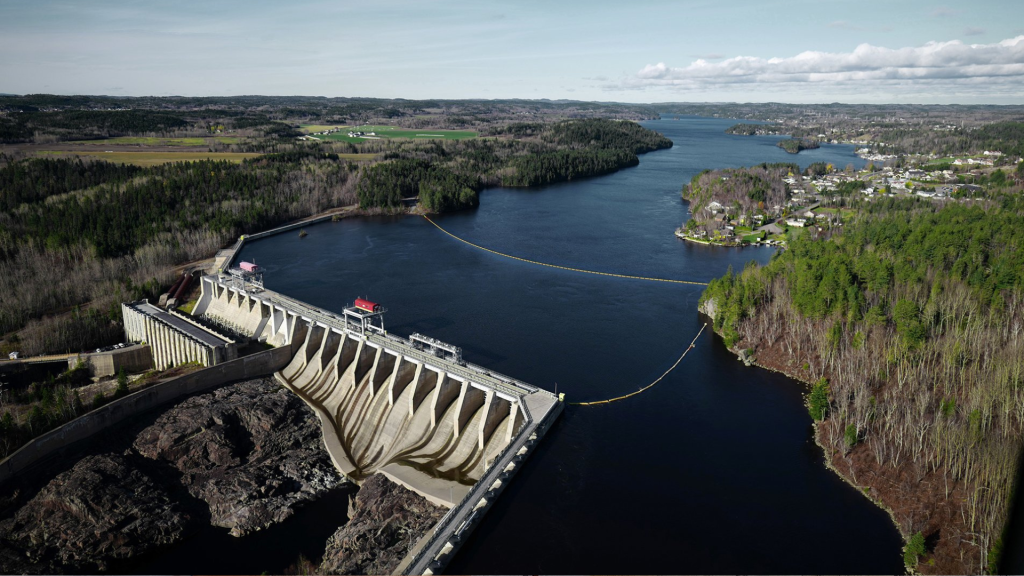Green iron, tariffs blue creating golden opportunity

Global iron ore supply is expected to increase steadily in the five years to 2030. Outside of major producing regions Australia and Brazil, iron ore production is expected to be bolstered by additional capacity from Canada and India, as well as new projects coming out of Africa.
Demand for green iron worldwide could reach more than 850 million tonnes by 2050 – in a net zero scenario. This bodes well for Australia considering it has substantial iron ore, infrastructure, and renewable energy resources making it well placed to support growing global demand for green iron and steel.
In this Q1 2025 quarterly outlook, mining executives tell Mining.com.au that while the iron ore sector is somewhat “hazy”, with plenty of unknowns and changing macroeconomic dynamics, Australia is positioned with a golden opportunity.
Alchemy Resources’ (ASX:ALY) CEO James Wilson says the consensus seems the outlook for iron ore is somewhat “hazy” largely because of a few key areas including the tariffs announced from US President Donald Trump and China’s mandated steel cuts.
“It’s largely production and politics. Brazil’s Vale (NYSE:VALE) reached record output levels not seen since 2018 and US politics and tariffs and protectionist policies are capping any upside for iron ore near term,” Wilson tells this news service.
“In addition the Chinese have said they will cut steel production by 50 million tonnes per year as the industry pushes to decarbonise steel making. Mind you, they still produce 1 billion tonnes of the material so it’s not a huge decline, but it does reduce demand for raw products.”
According to the Department of Industry, Science and Resources (DISR) March 2025 Resources and Energy Quarterly, total iron ore exports in 2024 from Brazil increased by 7 million tonnes. Vale, which accounts for over 80% of Brazil’s iron ore output, expects to produce 325-335 million tonnes in 2025.
This aligns with the 328 million tonnes produced last year – the highest since 2018. DISR says Brazil is expected to add an additional 45 million tonnes a year of iron ore exports by 2030, which includes Vale’s S11D expansion, as well as new and expanded output by other producers, including CSN (Casa de Pedra mine) and IndoSino.
Elaborating on Wilson’s views, Hawsons Iron (ASX:HIO) CEO Tom Revy says there’s a lot of unknowns globally that could influence the iron ore sector in 2025 and 2026.
“On the demand side, it’s a question of Chinese demand and their economy in general. On the supply side Australia and Brazil are set to increase production while new supply is expected in the medium term to come from Africa,” Revy tells Mining.com.au.
“Overall, the year 2024 saw a fall in iron ore demand largely due to a reduction in steel demand predominantly led by China. Margins on steel were squeezed resulting in pressure being applied to raw material (iron ore) producers. Despite a surge in price in September / October 2024 (as a result of new Chinese stimulus measures) , iron ore prices fell in the fourth quarter to finish flat into early 2025.”
China’s steel production fell 1.7% in 2024, continuing the downward trend since the peak in 2020. The National People’s Congress in March announced authorities will promote restructuring to achieve production cuts.
DISR reports further falls are forecast over the rest of the decade, reducing China’s annual steel output by 55 million tonnes by 2030 relative to 2024. DISR’s arch 2025 Resources and Energy Quarterly notes that China’s declining population and tapering urban population growth is driving a structural downshift in demand for new residential and infrastructure-related construction.
The downturn in the Chinese property sector — now in its fourth year — has accelerated this trend. New construction starts — the most steel-intensive stage of the construction process — continue to fall and is down 22% in 2024. However, DISR says there has been tentative signs of improvement in recent months, with new home sales slowly increasing – up 1.2% year-on-year in February 2025.
Hazy outlook amid chaos, conflict
Tempest Minerals (ASX:TEM) Managing Director Don Smith agrees, but in his view China demand hasn’t changed much whereas both the US and Europe have spoken for several years about “gigantic trillion dollar scale infrastructure projects”.
Conceding it is difficult to forecast the outlook for the sector in these challenging economic times, Smith says: “Normally I would posit what I think is coming but the world seems pretty chaotic right now. Short of a global conflict I think things will stay relatively the same in 2025.”
Smith explains to this news service that the US for example needs to rebuild some incredible percentage of the bridges in the country. On the other hand, Simandou and the other projects surrounding it come online soon, which could (in theory) rewrite supply side for haematite and obvious implications for Pilbara region in Western Australia.
“Magnetite is very popular at the moment with companies like Cyclone Metals (ASX:CLE) enjoying favour on the market,” Smith adds.
Progress on Guinea’s Simandou 120 million tonne iron ore mine continued in early 2025. Rio Tinto’s (ASX:RIO) Simfer mine has a targeted capacity of 60Mt per year. Another 60Mt capacity is under development by WCS, – a joint venture between Baowu and Guinea’s Government. Rio Tinto has stated that a benefit of the high grade Simandou orebody (>65% iron content) is the blending opportunities it provides to meet the needs of steelmakers, as reported by DISR.

Steel in demand?
Demand for steel fell sharply in 2024 and continues to be affected by the weakness in industrial output that has persisted since early 2023. Flat dwelling construction — due to declines in household purchasing power and tight financing conditions — also continues to depress steel demand in advanced economies.
Global steel demand is forecast to recover over the outlook period to 2030, but with substantial divergence among major steel markets
World steel production was also weak last year and remains about 4% below the peak in global output in 2021. Production is expected to remain flat in 2025 then slowly pick up over the five-year outlook period, reaching just under 2 billion tonnes by 2030.
The expected growth in global steel production could be met using existing production capacity. Global crude steelmaking capacity exceeded global steel production by over 600 million tonnes in 2024.
“However, substantial new steel capacity — either under construction or planned — is expected over the outlook, with large-scale projects in Asia, North America, Europe and the Middle East”
“However, substantial new steel capacity — either under construction or planned — is expected over the outlook, with large-scale projects in Asia, North America, Europe and the Middle East,” DISR reports.
“The OECD warns that excess capacity will become increasingly problematic in the next few years, putting further pressure on prices and steelmakers’ margins and distorting trade and markets. Global industrial production is expected to gradually rise over the outlook, bolstered by a pickup in steel-intensive manufacturing, infrastructure and civil construction sectors in advanced economies.”
According to Hawsons Iron’s Revy, green steel production is likely to start gaining further global attention, with the European Union in particular, encouraging development of “low emissions” steel.
“As one of the leading gas emissions industries, steel production is currently under review with new technologies being developed for the long term while more high-grade iron ore feed supplies are being sought on the short to medium term for steel producers to avoid potential production penalties. High grade iron ore (67%+ Fe) currently only represents 4% of total production,” Revy explains to this news service.
“The bottom line for low/medium grade iron ore pricing in 2025, is that we should see slightly lower prices, at best flat.”
As previously mentioned, Australia’s substantial iron ore reserves, infrastructure, and renewable energy resources positions it to support rising demand for green iron and steel. Global demand for green iron could reach over 850 million tonnes by 2050.
Green iron proposals are currently under consideration around Australia to capture the growing global demand for green iron. Given the emerging nature of the industry, many projects are at the early stages of development, ranging from concept and pre-feasibility to commercial feasibility assessments.
Fortescue (ASX:FMG) has announced its intent to develop efficient and competitive green hydrogen and is looking to commence production of green iron at the Christmas Creek Green Metal Plant by the end of 2025. The company also announced a feasibility study assessing a 1Mtpa green iron plant to commence by 2030.

Price and production
As Tempest’s Smith reiterates, iron is of course multiple commodities lumped into one. Both haematite, magnetite, and others are all buoyant at the moment and outperforming most financial price estimates for several years for now.
Revy concurs, but adds the price is likely to remain under pressure until a number of the short and medium term catalysts start to show improvement, in particular any stimuli that may be introduced by the Chinese Government to encourage new domestic property development.
Wilson’s view is that prices will drive sideways near-term, having been in a bit of a glut for most of 2024.
“Fortunately for Aussie producers we have an uptick in a weaker AUD which helps drive export pricing,” he tells Mining.com.au.
“I’d say until we have clarity over tariffs and the health of the US economy potentially falling into recession, then you might see prices moderate or hang around current levels.
“Having said that, our proximity to our main market in Australia suggests that we have an advantage over Brazilian iron ore which is more costly to get to Asia given the distance it needs to travel to its key market. That might present an opportunity for Aussie product near term, and that combined with a weaker AUD gives us a clearer strategic advantage in 2025.”
For Revy, the main catalysts driving this outlook are, among others, subdued market conditions in China (and globally), with most hoping for the Chinese government to boost domestic consumption and revive the property market; continued trade tensions between China and the US; ongoing war between Ukraine and Russia as well as other geopolitical tensions; and finalisation of new incentives and/or penalties on green/dirty iron ore.

Inorganic growth opportunities
Meanwhile, Stewart McCallion, Managing Director of iron ore explorer Burley Minerals (ASX:BUR) Managing Director believes there are solid opportunities for iron ore companies with strong balance sheets and cash flows.
McCallion recently told Mining.com.au that miners boasting robust resources in the right location, with strong relationships with stakeholders, and sound environmental management plans will be particularly appealing to the bigger players.
While he declines to say whether Burley has had preliminary discussions or interest from larger miners looking for partnerships or acquisitions, the Managing Director is confident Burley can take its Cane Bore Project forward on its own merits.
Burley’s Cane Bore Iron Project spans 222km2 of the Pilbara near majors such as Mineral Resources (ASX:MIN) and Rio Tinto (ASX:RIO), both of which also have large channel iron deposits (CID) resources.
Mineral Resources’ Onslow Iron project continues to ramp up, producing 4.4 million tonnes of iron ore in Q4 2024, progressing towards its nameplate capacity of 35Mt per year.
Rio Tinto produced about 328 million tonnes of iron ore in 2024, down 1% from 2023. Last year’s result reflects depletion in some mines, partially offset by productivity improvements across the Pilbara system. Rio Tinto is advancing its next tranche of Pilbara mine replacement projects. In February 2025 the company announced the development of the 34Mt Brockman Syncline 1 sustaining project after receiving all key approvals. First production is expected in 2027.

Within the Pilbara, Burley has identified more than 800 hectares of potential CID resource within the Cane Bore exploration licence area and is undertaking an aggressive exploration program to define a resource for the project.
Reconnaissance work identified multiple CID target areas over more than 20km of strike, averaging 400m wide and up to 20m high.Previous rock chip sampling by Burley returned results of up to 56.9% iron, which if this were to undergo calcination would increase that to 63.6% iron.
Large iron ore producers are on the hunt for more resources to sustain their production profiles in Western Australia’s Pilbara and juniors with solid projects and strong future potential are on their radar, McCallion adds.
As reported by Mining.com.au, this is evidenced by the recent takeover of Red Hawk Mining (ASX:RHK) by iron ore major Fortescue (ASX:FMG). This was followed by Japanese trading house Mitsui & Co’s (TYO:8031) $8.4 billion purchase of a 40% interest in Rio Tinto’s (ASX:RIO) undeveloped Rhodes Ridge Project.
At the smaller end of town, Fenix Resources (ASX:FEX) has launched a $61.4 million all-scrip off-market takeover bid for CZR Resources (ASX:CZR). In March 2024, Strike Resources (ASX:SRK) completed the $20.5 million sale of its Paulsens East Iron Ore Project to Miracle Iron Holdings.
Australia’s iron ore sector faces a major structural shift over the five-year outlook period to 2030. Over the past two decades, Australia’s iron ore miners achieved a roughly four-fold increase in production — from about 200 million tonnes in 2004 to over 900Mt in 2024.
As DISR reports, this was made possible by a vast program of exploration and capital investment. “However, sustaining production volumes at these levels requires ongoing investment in exploration to address declining volumes and ore quality, as well as investment to develop new deposits and build tie-in infrastructure,” DISR reports.
Write to Adam Orlando at Mining.com.au
Images: Mining.com.au, Burley, DISR, Markets Insider & Rio Tinto

